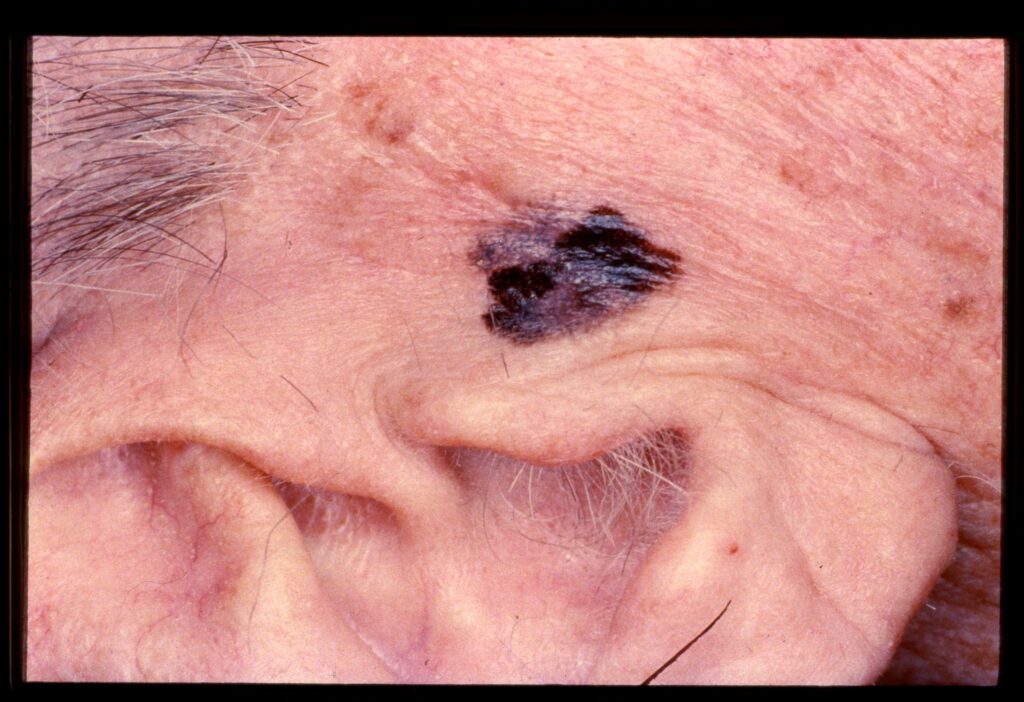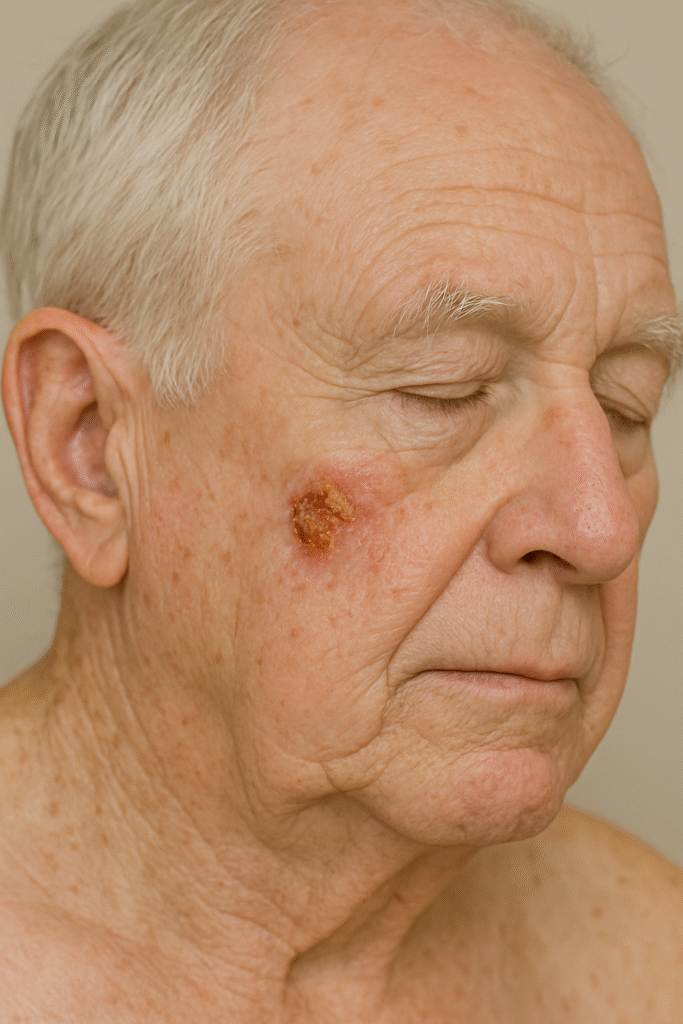Actinic Keratosis (AK) is a rough, scaly patch on the skin caused by long-term exposure to ultraviolet (UV) radiation from the sun or tanning beds. Commonly found on sun-exposed areas such as the face, ears, neck, scalp, and hands, AKs are considered precancerous lesions that can potentially progress to squamous cell carcinoma, a type of skin cancer. They are most often seen in fair-skinned individuals over the age of 40.
Prevention includes practicing sun safety—such as wearing sunscreen, protective clothing, and avoiding tanning beds.
At our dermatology clinic, we diagnose and treat actinic keratoses with options like cryotherapy (freezing), topical medications, chemical peels, or our Ultra laser. Early detection and treatment are key to preventing skin cancer and maintaining healthy skin.

Basal Cell Carcinoma or basal cell cancer (BCC) is the most common type of skin cancer, arising from the basal cells in the outermost layer of the skin. It often appears as a pearly bump, a pink patch, or a sore that doesn’t heal, typically on sun-exposed areas like the face, ears, neck, and arms.

BCC is primarily caused by long-term ultraviolet (UV) radiation exposure from the sun or tanning beds. While it grows slowly and rarely spreads to other parts of the body, it can become locally invasive if left untreated.
Prevention involves consistent sun protection, including daily use of broad-spectrum sunscreen, wearing protective clothing, and avoiding tanning beds.
At our dermatology clinic, we diagnose BCC through skin examination and biopsy, and offer effective treatments such as surgical excision, Mohs surgery, electrodesiccation and curettage or curettage and desiccation (EDNC or CND), topical medications, or referral for radiation therapy, depending on the size, type, and location of the tumor. Early detection ensures the best outcomes.
self-schedule your appointment now on our website
Malignant Melanoma is the most serious form of skin cancer, developing in the melanocytes—the cells that produce pigment in the skin. It often appears as a new or changing mole, especially one that is asymmetrical, has irregular borders, multiple colors, a diameter larger than a pencil eraser, or is evolving in size, shape, or color.
Melanoma is primarily caused by intense, intermittent exposure to ultraviolet (UV) radiation from the sun or tanning beds, and risk increases in individuals with fair skin, a history of sunburns, or a family history of melanoma.
Prevention includes practicing rigorous sun protection, avoiding tanning beds, and performing regular skin self-checks to monitor for suspicious moles.

At our dermatology clinic, we perform thorough skin exams and biopsies to detect melanoma early. Treatment often involves surgical excision, and in more advanced cases, may include a lymph node biopsy, immunotherapy, targeted therapy, or referral for specialized cancer care. Early detection is critical to improving survival and outcomes.
Squamous Cell Carcinoma / Squamous Cell Cancer (SCC) is the second most common type of skin cancer, arising from the squamous cells in the outer layer of the skin. It often appears as a scaly red patch, a wart-like growth, or a sore that crusts or bleeds and doesn’t heal, most commonly on sun-exposed areas such as the face, ears, neck, lips, and hands.

SCC is primarily caused by cumulative ultraviolet (UV) radiation from the sun or tanning beds, and is more likely to develop in fair-skinned individuals or those with a history of sun damage or precancerous lesions like actinic keratoses.
Prevention includes protecting your skin with daily broad-spectrum sunscreen, wearing protective clothing, and avoiding indoor tanning.
At our dermatology clinic, we diagnose SCC through clinical evaluation and biopsy, and provide expert treatment options including surgical excision, Mohs micrographic surgery, electrodesiccation and curettage (EDNC) or curettage and desiccation (CND), topical therapies, or referral for radiation, depending on the location and extent of the tumor. Early treatment is essential to prevent spread and ensure optimal results.